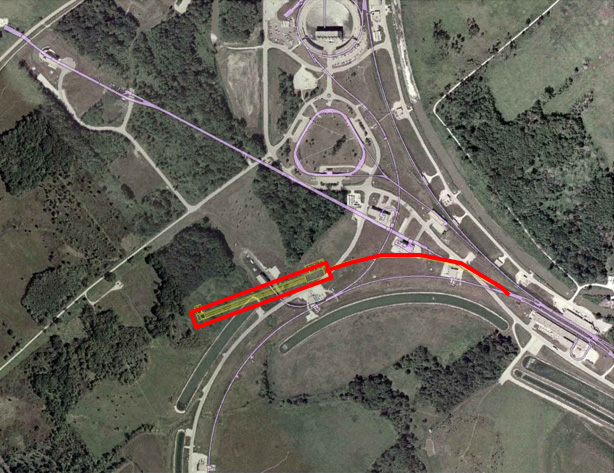Fermilab and the American Recovery and Reinvestment Act
Long-baseline neutrino research
The proposed long-baseline neutrino project will place a particle detector at great depth underground to study neutrinos from an intense beam generated several states away.
Researchers from six American laboratories and more than two dozen universities, most in the United States, have proposed plans to generate an intense beam of neutrinos at Fermilab and to place the detector in the Homestake Gold Mine near Lead, South Dakota. It would be the world’s deepest underground laboratory, hosting experiments as deep as 8,000 feet underground.
Neutrinos are the most abundant but perhaps least understood particles in our galaxy. Scientists hope to observe the neutrinos changing from one type to another as they travel. Studying a neutrino beam at two locations a large distance apart gives the neutrinos adequate time and space to change. Placing detectors below layers of earth and rock shields them from other particles that approach the Earth from space.
Long Baseline Neutrino Experiment



